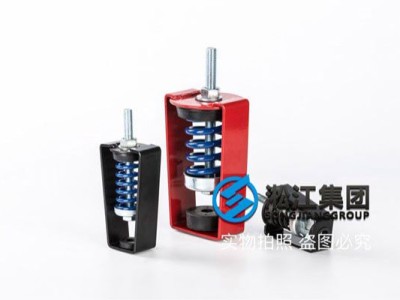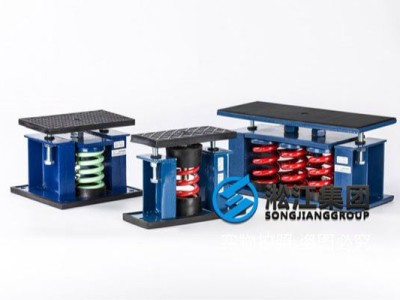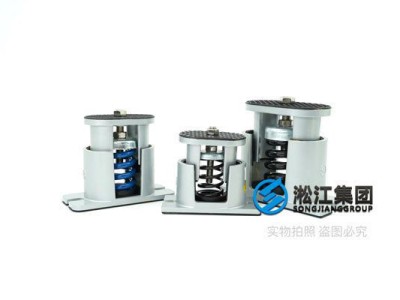High-pressure rubber expansion joints with stainless steel flanges play a critical role in ensuring smooth operation and pressure resistance in piping systems. These components are essential in managing vibrations and thermal expansion while maintaining system integrity. To explore more about expansion joints piping, continue reading.
A high-pressure rubber expansion joint with a stainless steel flange is designed to absorb vibration and compensate for movement in high-pressure systems. It helps maintain the stability of piping systems under challenging conditions like thermal expansion and mechanical stress.
Let’s explore how these expansion joints work, the benefits of using stainless steel flanges, and other important factors to consider when selecting this equipment.
What is a high-pressure rubber expansion joint with stainless steel flange?
A high-pressure rubber expansion joint with a stainless steel flange is a specially designed component used in piping systems to absorb vibrations, compensate for thermal expansion, and reduce noise. It combines the flexibility of rubber with the durability and corrosion resistance of stainless steel, making it ideal for high-pressure applications.
These joints consist of a rubber body that can flex and expand, allowing them to absorb pressure changes. The stainless steel flange provides a secure connection to other components of the system, ensuring a robust and leak-proof installation.
High-pressure rubber expansion joints with stainless steel flanges are essential in various industries, including power plants, chemical processing, and water treatment facilities. They help reduce stress on piping systems, ensuring that pipelines can handle pressure fluctuations and vibration. The combination of rubber and stainless steel enhances the joint’s durability, making it suitable for environments with high temperatures and corrosive substances.
For more information on metal expansion joints, feel free to visit our website.
What are the benefits of using stainless steel flanges in high-pressure expansion joints?
Stainless steel flanges are often used in high-pressure expansion joints due to their superior strength, durability, and resistance to corrosion. These properties make them an ideal choice for industries dealing with harsh environments.
Stainless steel flanges offer improved sealing performance, greater resistance to high temperatures, and a longer lifespan, even in corrosive conditions. They are particularly useful in maintaining the integrity of high-pressure piping systems.
Using stainless steel flanges in high-pressure expansion joints helps prevent leakage and minimizes the risk of failure in demanding applications. Stainless steel’s ability to withstand corrosion from chemicals and high temperatures makes it indispensable in industries such as petrochemicals, power generation, and HVAC systems. Additionally, stainless steel flanges provide a secure, long-lasting connection, reducing maintenance costs over time.
Would there be any problems if we connect a carbon steel flange to a stainless steel flange?
Connecting a carbon steel flange to a stainless steel flange in high-pressure systems can cause some challenges, particularly regarding corrosion and material compatibility.
The main issue when connecting these materials is the risk of galvanic corrosion, which occurs when two dissimilar metals are in contact in the presence of an electrolyte. This can lead to rapid degradation of the carbon steel flange.
To avoid galvanic corrosion, it’s important to use proper insulating materials between dissimilar flanges. In many cases, a gasket or coating can prevent direct contact between the two metals, ensuring that the connection remains secure and leak-free. Choosing compatible materials for flanges helps maintain the long-term reliability of the piping system.
What is the difference between metal expansion joints and rubber expansion joints?
Metal and rubber expansion joints serve the same purpose in piping systems but differ in material properties, performance, and applications.
Metal expansion joints are designed to withstand extreme temperatures and pressures, while rubber expansion joints are more flexible and suited for lower to medium pressure systems. Rubber joints can also reduce noise and vibrations more effectively.
Metal expansion joints are often used in applications where higher temperatures and pressure levels are common, such as in power plants and heavy industrial settings. On the other hand, rubber expansion joints are ideal for systems where flexibility and vibration absorption are key concerns. Rubber joints are also easier to install and maintain, making them a popular choice for many industries.
What is the rule of thumb for expansion joints?
When selecting an expansion joint, it’s important to follow certain guidelines to ensure it fits the system’s requirements and functions effectively.
A general rule of thumb is to choose an expansion joint based on the pressure, temperature, and movement expected in the piping system. It should be durable enough to handle the system’s dynamic loads without compromising performance.
The selection of the right expansion joint involves considering factors such as pipe size, movement tolerance, and material compatibility. For instance, elastomer expansion joints are often used for their flexibility, while PTFE expansion joints are chosen for their chemical resistance. Each type has its specific advantages, and the choice depends on the application needs.
How does a high-pressure rubber expansion joint work?
High-pressure rubber expansion joints work by allowing controlled movement within the piping system, absorbing vibrations, and accommodating thermal expansion or contraction.
These joints reduce the mechanical stress on pipes by flexing and expanding in response to pressure changes, preventing damage to the piping system.
High-pressure rubber expansion joints help maintain the stability of systems by compensating for misalignment and temperature-induced expansion. They also absorb vibration, reducing noise and protecting sensitive equipment. By accommodating changes in pressure, these joints prolong the life of piping systems and reduce the risk of system failure.
Do rubber expansion joints need gaskets?
Rubber expansion joints typically require gaskets to ensure a proper seal and prevent leakage in the system.
Gaskets are essential to create a tight seal between the expansion joint and the flanges, especially in high-pressure applications.
When selecting gaskets for rubber expansion joints, it’s crucial to consider factors such as the operating temperature, pressure, and the nature of the fluid being transported. Choosing the right gasket material ensures the longevity and reliability of the joint, especially in demanding environments where leakage prevention is critical.
How long do rubber expansion joints last?
The lifespan of rubber expansion joints depends on various factors, including the operating environment and maintenance practices.
On average, rubber expansion joints last between 5 and 10 years. However, factors such as temperature, pressure, and exposure to harsh chemicals can affect their durability.
Regular inspection and maintenance of rubber expansion joints can extend their lifespan. Ensuring that the joints are not subjected to excessive pressure or extreme temperatures can help prevent premature failure. Additionally, proper installation and periodic checks for wear and tear are essential in maximizing their performance.
Do you need gasket sealer with a rubber gasket?
Gasket sealers are sometimes used with rubber gaskets to provide extra sealing power, particularly in high-pressure systems.
While rubber gaskets can provide a good seal on their own, using a gasket sealer can enhance their performance and prevent leakage in challenging conditions.
Gasket sealers are especially useful when working with rubber gaskets in systems exposed to high temperatures, pressure, or aggressive chemicals. They help ensure a tighter, more reliable seal, reducing the risk of leaks and improving the overall performance of the piping system.
What industries use high-pressure rubber expansion joints with stainless steel flanges?
High-pressure rubber expansion joints with stainless steel flanges are commonly used in industries where high-pressure pipelines are integral to operations.
These joints are essential in industries such as power generation, oil and gas, chemical processing, and water treatment, where high-pressure and vibration absorption are critical.
In power plants, high-pressure rubber expansion joints are used to connect boilers, pumps, and turbines, ensuring smooth operation under extreme pressure. Similarly, in chemical processing plants, they help absorb thermal expansion and reduce vibrations, maintaining system integrity and preventing damage to sensitive equipment.
Summary:
High-pressure rubber expansion joints with stainless steel flanges are critical components for maintaining the efficiency and longevity of high-pressure piping systems. Their ability to absorb vibrations, compensate for movement, and handle high-pressure environments makes them indispensable in various industrial applications.




![[Reinforced] double sphere water pump rubber expansion Joints with control tie rods](https://pump-rubber-expansion-joint.com/wp-content/themes/xsding.sj/timthumb.php?src=https://pump-rubber-expansion-joint.com/wp-content/uploads/2022/06/Water-Pump-Rubber-Expansion-Joints-10.jpg&h=300&w=400&zc=1)

![[NR] Concentric reducing water pump rubber expansion joints for air conditioning water](https://pump-rubber-expansion-joint.com/wp-content/themes/xsding.sj/timthumb.php?src=https://pump-rubber-expansion-joint.com/wp-content/uploads/2022/06/Water-Pump-Rubber-Expansion-Joints-2-10.jpg&h=300&w=400&zc=1)



![[Threaded] Double ball water pump rubber expansion Joints”noise reduction”](https://pump-rubber-expansion-joint.com/wp-content/themes/xsding.sj/timthumb.php?src=https://pump-rubber-expansion-joint.com/wp-content/uploads/2022/06/Water-Pump-Rubber-Expansion-Joints-2-12.jpg&h=300&w=400&zc=1)







